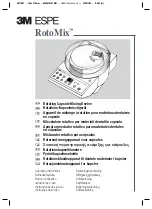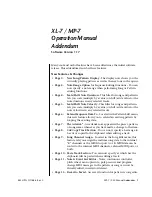
4. Select Speech Stenger in the Test Selector.
–
Make sure that the control panel of the Otosuite software is set to the correct transducer, and desired routing
and sound level.
–
Set the level for the better ear at 10 dB above recorded SRT and set the level in the poorer ear at 10 dB below
recorded SRT.
5. Make sure that the
Stenger
box has appeared in the display.
6. Make sure that
Stim. Lock
is enabled and present the word to both ears simultaneously.
7. If the patient truly has a hearing loss in the poorer ear, he/she will only hear the presented word in the better ear and
will respond by repeating the word.
–
This is a negative Stenger response.
8. If the patient does not truly have a hearing loss in the poorer ear, he/she will only hear the presented word in the
reportedly poorer ear. As the patient is trying to appear as if he/she has a hearing loss in that ear, the patient will not
repeat the word.
–
This is a positive Stenger response.
9. Store the test result in the
Stenger
box.
5.2.4
Performing Weber
1. Properly place the bone conductor on the forehead.
2. Instruct the patient so that he/she knows what to expect: "You will hear a tone. Tell me whether you hear the tone in
the left, right or both ears."
3. Select
Weber
in the Test Selector.
–
Make sure that the control panel of the Otosuite software is set to the correct transducer and desired routing,
sound level and frequency.
4. Make sure that the
Weber
box has appeared in the display.
5. Present a pure tone at a frequency below 1000 Hz and a sound level above the patient's bone conduction threshold.
6. If the patient reports hearing the tone equally in both ears, this is indicative of normal hearing.
7. If the patient reports hearing the tone in the poorer ear, this is indicative of a conductive hearing loss.
8. If the patient reports hearing the tone in the better ear, this is indicative of a sensorineural hearing loss.
9. Store the test result in the
Weber
box.
5.2.5
Performing Rinne
1. This test is performed using a 256 Hz or 512 Hz tuning fork and compares that patient's hearing to air and bone con-
duction.
–
This test is used to confirm a conductive hearing loss.
2. Instruct the patient that two tones will be presented to him/her. Ask the patient to tell you when the tone can no
longer be heard.
3. Make sure that the
Rinne
box is present.
4. Strike the tuning fork against the knee or the elbow, not the table, otherwise the vibrations will be excessive and
cause the patient discomfort.
5. Hold the fork for 2-3 seconds and then place it on the patient's mastoid.
68
Madsen A450
5 Examples of audiometric testing
















































